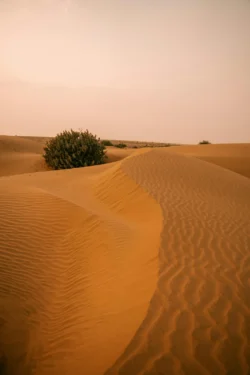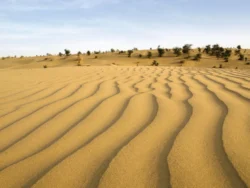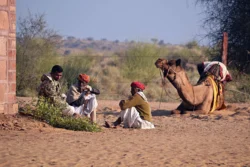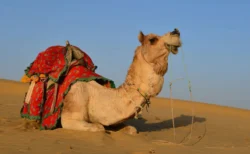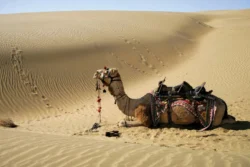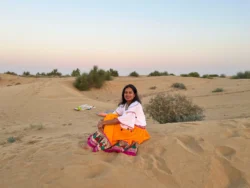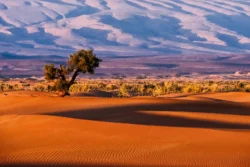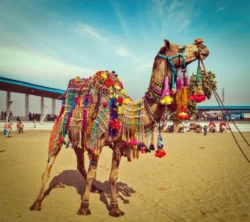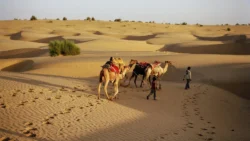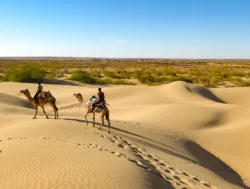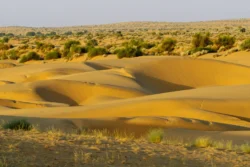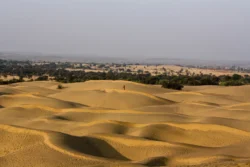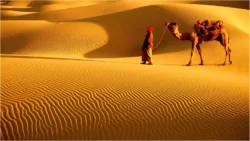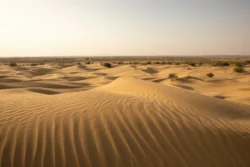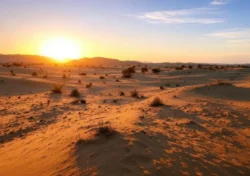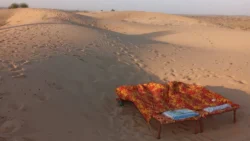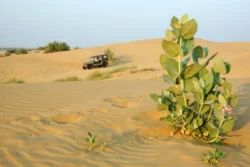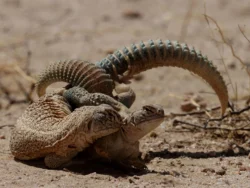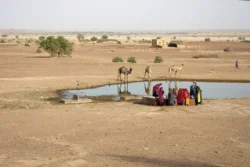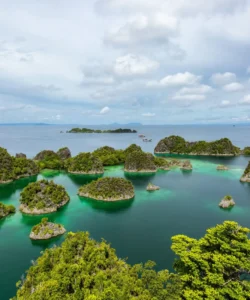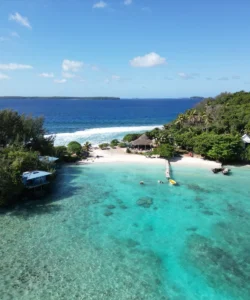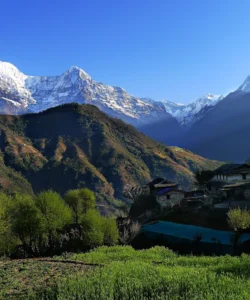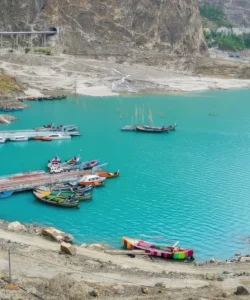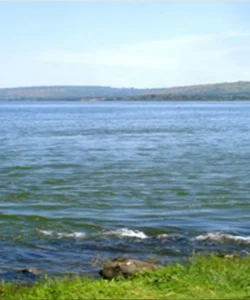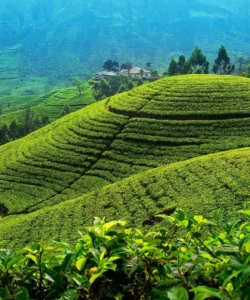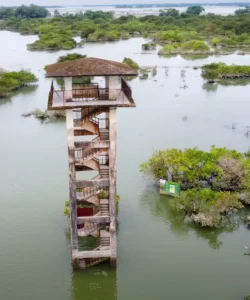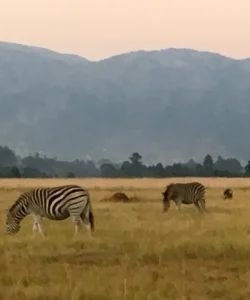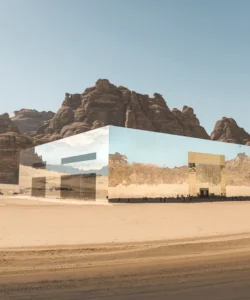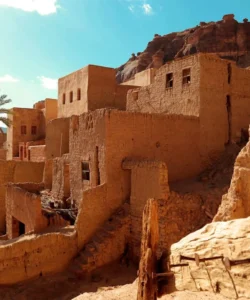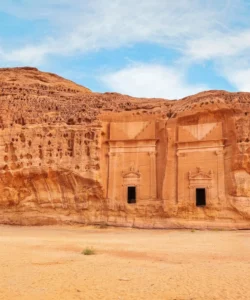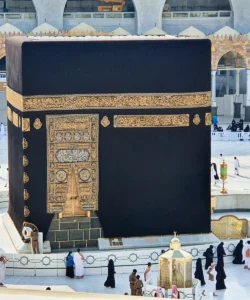The Thar Desert, also known as the Great Indian Desert, is a vast and captivating arid region that stretches across northwestern India and into southeastern Pakistan. Unlike many stereotypical desolate deserts, the Thar is remarkably vibrant, being the world’s most densely populated desert and boasting a unique blend of shifting sand dunes, ancient geological features, and a rich, resilient culture.
Name: Thar Desert (also known as the Great Indian Desert)
Address: Primarily located in the state of Rajasthan, India, covering about 60% of its land area. It also extends into parts of Gujarat, Punjab, and Haryana in India, and into the Sindh and Punjab provinces of Pakistan (where it is known as the Cholistan Desert and Tharparkar Desert).
How to Get There:
Access to the Thar Desert varies depending on which part you wish to visit, with Jaisalmer in Rajasthan, India, being a popular tourist hub.
- From India (Rajasthan):
- By Air: The closest major airports are Jaipur International Airport (JAI) (just outside its border in Rajasthan) or Jaisalmer Airport (JSA) (which has more limited flights, often only during peak tourist season). Jodhpur Airport (JDH) is also a common gateway. From these airports, you can hire a taxi or take a bus.
- By Train: Jaisalmer Junction (JSM) is a popular railway station that connects to major cities like Delhi, Jodhpur, and Jaipur. From Jaisalmer, you can arrange desert safaris or local transport to the sand dunes.
- By Road: Jaisalmer is well-connected by road to major cities in Rajasthan. You can hire a cab or take a bus.
- Desert Safaris: Most visitors engage in desert safaris from Jaisalmer, which typically include jeep safaris to the Sam Sand Dunes or camel safaris, often combined with overnight camping under the stars, traditional folk performances, and meals.
- From Pakistan:
- By Air: International airports in Pakistan like Shaikh Zayed International Airport (Rahim Yar Khan) or Multan International Airport (MUX) are to the south of the Indus River, requiring further road travel. Karachi (KHI) is a major international gateway to Sindh province.
- By Road: The Pakistani side of the Thar (Cholistan and Tharparkar deserts) can be accessed by road from cities like Bahawalpur (for Cholistan) or Karachi (for Tharparkar).
- Best Time to Visit: The ideal time to visit the Thar Desert is during the cooler winter months, from October to March. Summers (April-June) are extremely hot, with temperatures often soaring above 45-50°C (113-122°F), making outdoor activities challenging. Winter nights can also be quite cold.
Landscape and Architecture:
The Thar Desert’s “landscape” is a dynamic and varied terrain, shaped by wind and ancient geological processes. Its “architecture” is largely vernacular, reflecting centuries of adaptation to the arid environment.
- Sand Dunes: Approximately 40% of the Thar Desert is covered by shifting sand dunes, which can vary significantly in size, from 16 meters (52 ft) in the north to over 150 meters (492 ft) in the south. These dunes are primarily longitudinal and transverse, constantly sculpted by strong winds, creating a mesmerizing, ever-changing visual tapestry.
- Stony Plains and Rocky Outcrops: Alongside the dunes, the desert also features extensive rocky plains, scattered hillocks (often part of the Aravalli Range on its eastern flank), and craggy rock formations. These older geological formations contrast with the shifting sands.
- Salt Flats (Rann): In low-lying areas, particularly near the southern border with the Rann of Kutch, you’ll find salt flats (locally known as “rann”). These are seasonal wetlands that flood during the monsoon and dry out to leave a shimmering salt crust.
- Ephemeral Rivers and Oases: The Luni River is the only significant river in the desert, but it is ephemeral, drying up during the dry season. Scattered oases provide vital water sources for human settlements and sparse vegetation.
- Desert Vegetation: Despite the harsh climate, the Thar supports surprisingly diverse, drought-resistant vegetation, including thorn scrub, grasses (like khejri – Prosopis cineraria, babool – Acacia nilotica, sewan grass), and hardy shrubs. Plants have evolved deep root systems, waxy coatings, and water-storage abilities to survive.
- Traditional Architecture: Mud Houses (Bhungas) and Havelis: The human “architecture” in the Thar is a testament to sustainable and climate-responsive design.
- Mud and Thatch Houses: In rural areas, particularly in Kutch and parts of Rajasthan, traditional homes are often circular mud huts (Bhungas) with conical thatched roofs. These provide excellent insulation against extreme temperatures, keeping interiors cool in summer and warm in winter. They are often adorned with intricate mud-mirror work and vibrant murals.
- Forts and Palaces: The historical cities on the desert’s edge, like Jaisalmer, Jodhpur, and Bikaner, boast magnificent forts, palaces, and havelis (traditional mansions). These are often built from local sandstone (like Jaisalmer’s “Golden Fort” made of yellow sandstone) and feature intricate jharokhas (balconies), courtyards, and thick walls designed for defense and climate control.
- Stepwells (Baoris): Ancient stepwells are remarkable examples of water harvesting and management architecture, designed to access deep groundwater and provide cool respite.
What Makes It Famous:
- World’s Most Densely Populated Desert: Unlike the Sahara or other vast deserts, the Thar is famous for its remarkably high human population density (around 83 people per sq km), showcasing a unique resilience and adaptation of human life to arid conditions.
- Vibrant Culture of Rajasthan: The Thar Desert is deeply intertwined with the rich, colorful, and vibrant culture of Rajasthan. It’s known for its folk traditions, including mesmerizing music (by Manganiyars and Langas), energetic dances (like Ghoomar and Kalbelia), puppet shows, and elaborate festivals (like the Desert Festival in Jaisalmer and the Pushkar Fair), which are major tourist draws.
- Desert Safaris (Camel and Jeep): The iconic camel safaris over the golden sand dunes, especially around Jaisalmer’s Sam Sand Dunes, are a quintessential Thar Desert experience, allowing visitors to witness spectacular sunrises and sunsets. Jeep safaris also offer thrilling rides.
- Unique Biodiversity: Despite its arid nature, the Thar is a surprisingly biodiverse region, home to numerous adapted species, including the endangered Great Indian Bustard (Rajasthan’s state bird), blackbuck, chinkara (Indian gazelle), desert fox, and various raptors. It includes several national parks and wildlife sanctuaries.
- Jaisalmer: The Golden City: The city of Jaisalmer, with its “living fort” (Jaisalmer Fort, a UNESCO World Heritage Site), built entirely of yellow sandstone, is a major highlight, offering a glimpse into ancient desert architecture and lifestyle within the desert itself.
- Ancient Civilizational Connection: The Thar Desert was historically traversed by ancient trade routes and was home to segments of the Indus Valley Civilization (e.g., Kalibangan, a Harappan site, or extending towards Mohenjo-daro). This deep historical connection adds to its fame.
- Climate-Responsive Architecture: The ingenuity of its traditional mud houses and grand forts/palaces, designed to cope with extreme temperatures and sandstorms, is a testament to sustainable architectural practices.
Differences from Some Other Deserts/Wonders:
- Densely Populated vs. Desolate: The most striking difference is its high human population density, contrasting sharply with the largely uninhabited or sparsely populated vast deserts like the Sahara, Gobi, or Arabian Desert. This means the Thar offers a vibrant cultural experience alongside its natural beauty.
- Human-Nature Interplay: While other deserts are often seen as harsh environments to be conquered, the Thar showcases a unique long-standing, resilient interplay between humans and the desert environment, where communities have adapted and thrived for millennia through traditional practices (e.g., water harvesting, specific agricultural methods).
- Mix of Sand Dunes, Rocky Plains, and Salt Flats: While some deserts are purely sand dunes (e.g., Rub’ al Khali), the Thar offers a diverse landscape that includes shifting sand dunes, ancient rocky outcrops, and seasonal salt flats (towards the Rann of Kutch), providing varied geological features.
- Monsoon-Influenced Climate: The Thar receives its limited rainfall primarily from the monsoon, making it a subtropical hot desert. This distinguishes it from cold deserts (like Ladakh) or rain-shadow deserts.
- Luni River: The presence of the Luni River, albeit ephemeral and saline in its lower course, is a unique internal drainage system that influences local ecology, unlike many large deserts without such features.
- Integrated with Rich Cultural History: Unlike more barren deserts, the Thar is deeply integrated with the royal and folk history of Rajasthan, with numerous historical forts, palaces, and vibrant festivals directly within or on its fringes, offering a rich cultural narrative alongside the natural landscape.
- No Monumental Natural Formations (like volcanoes, specific lakes): While it has sand dunes, its fame isn’t tied to singular, dramatic natural formations like volcanoes (Mount Bromo, Ijen) or unique lakes (Loktak, Lonar). Its “wonder” is in the vastness, shifting nature, and the human and ecological adaptations to the arid conditions.
Thar Desert Photos:

